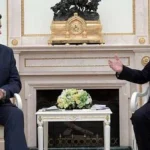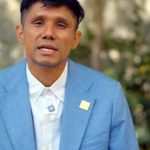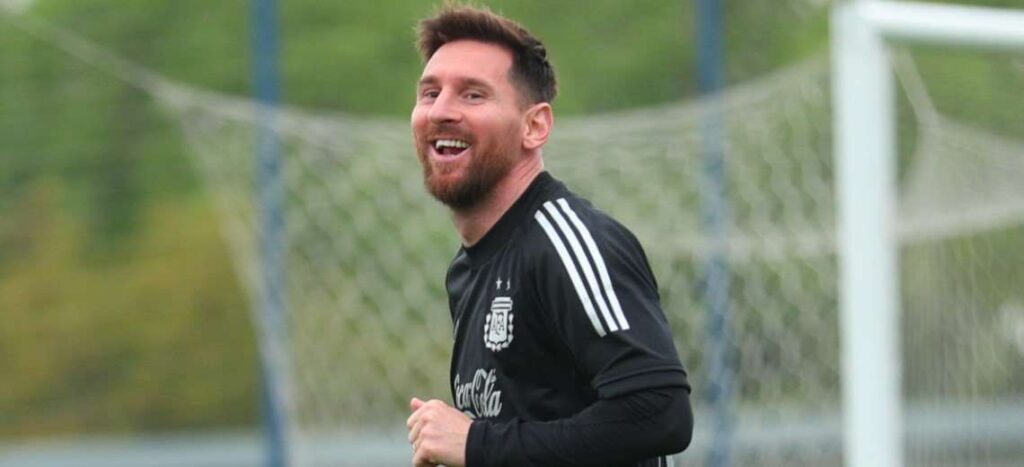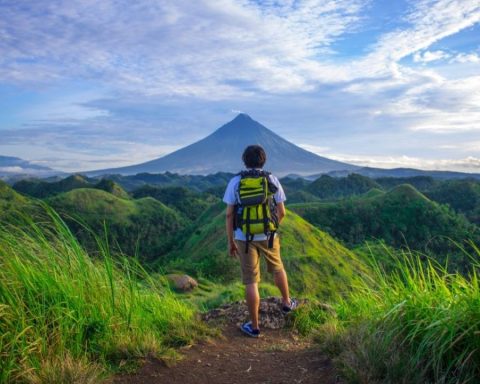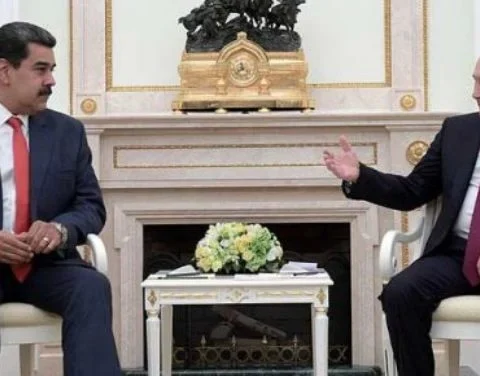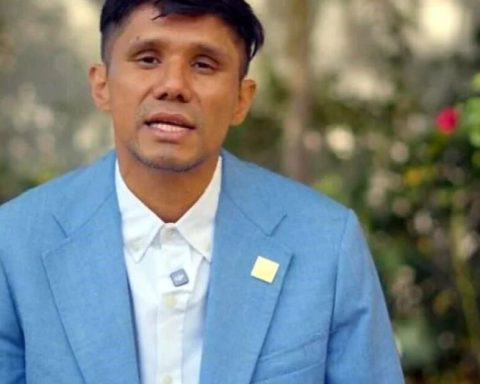The documents that confirm the complicity of sectors of the international press with the civic-military dictatorship of Argentina
“What you call successes are mistakes,
those who recognize as mistakes are crimes
and what they omit are calamities.”
Rodolfo Walsh, March 24, 1977
The bureaucracy of state terrorism left imprints of its atrocities. In this case, Télam presents eight folders with information never before revealed, which expose one of the obsessions of the criminal regime that took power on March 24, 1976: its attempt to counteract at the international level what the military junta defined as a “anti-Argentine” campaign, which was really the succession of denunciations in the country – but above all abroad – about the torture and disappearance of thousands of people in the extermination camps that the dictatorship deployed throughout Argentina.
The dictatorship designed an action of counterinformation and propaganda that was advised by the influential multinational advertising and communication agency Burson-Marsteller, and which had the Ministry of Foreign Affairs as the body from which the plan of the genocidal government was articulated to try to neutralize the questions it received in the main capitals of the world for its systematic violation of human rights.
In the basement of the Palacio San Martín, headquarters of the Foreign Ministry, the Press Office was located. A ministry that, in the distribution of power among the three forces, remained under the orbit of the Navy commanded by Emilio Massera. Every day, people who were detained and disappeared were transferred from the ESMA to the secluded building in the Retiro neighborhood to work on preparing the files and monitoring the news published about Argentina in the international press. A slave labor that was denounced before the Justice, in 1985, by the declarations of survivors in the Juicio a las Juntas. The eight files that are detailed in this investigation were part of that file of horror with which the military regime systematized the planning of the lie. The folios of the folders found indicate that there were hundreds of files made that have not yet seen the light and that they may never be found. But they existed, as evidenced by the documents presented exclusively by Télam.
Step by Step
The starting point of the investigation can be specified at the moment in which the journalist Enrique Vázquez received the folders that had remained, for years, kept in a drawer of the law firm of a lawyer who knew he was linked to a Human Rights organization. Secret files that he had received from the hands of a Foreign Ministry employee, who had rescued them from a dump truck at the time they were dismantling the archive at the Ministry of Foreign Affairs, in the days when the civil-military dictatorship languished.
When the lawyer died, a secretary from his study handed over the material to the journalist. And weeks ago, Vázquez contacted Télam to make all the documentation available. Thus began a joint effort between the journalist and different areas of the agency’s newsroom, which exchanged and contributed information to the already overwhelming material existence of the files.
In this data crossing, work was done on the files declassified a decade ago by the Foreign Ministry itself, which allowed supporting the information that emerged from the readings of the folders, as can be seen in this special report. There was also a re-reading of some statements before the Justice and journalistic interviews of people who were surviving victims of State terrorism, as was the case of the late Elisa Tokar, one of the disappeared detainees who suffered slave labor in the basements. of the San Martín Palace during his long months of captivity in the ESMA.
Vázquez is the author of the texts that describe the contents of each of the eight files that remained hidden for more than 40 years and that expose the propaganda maneuvers diagrammed by the Secretary of Public Information of the genocidal regime. His work was complemented with a historical contextualization that highlights some of the actions of State terrorism or civic resistance to the regime that had an international impact and relevance, such as the disappearance and murder of the journalist and writer Rodolfo Walsh (of the who turns 45 this March 25), the kidnapping of the journalist Jacobo Timerman or the murders of the founders of Mothers of Plaza de Mayo Azucena Villaflor de De Vincenti, Esther Ballestrino de Careaga and María Ponce de Bianco, and of the French nuns Alice Domon and Leonie Duquet. The 1978 World Cup that focused the eyes of the world on Argentina is also remembered. One of the maneuvers of the civic-military dictatorship, in this framework, was the invitation to journalists from different central countries in which there was a presence of Argentine exiles and complaints against human rights violations by the government of Jorge Rafael Videla.
Enrique Vázquez will deliver all the folders to Memoria Abierta, an institution that brings together different human rights organizations.
In each of these eight files, some of the journalists and media outlets who agreed to be part of the propaganda operation remained hidden for more than four decades; the exchanges of letters, the recommendations, the invitations, their expenses and even cables reserved with confidential information.
For years a central part of the planning of the lie remained hidden. Until today.
1981 Eduardo Jantus
Origin: Canada
The documentary filmmaker of the genocides
By Enrique Vazquez
This one, the one with the number 476, is distinguished from the other rescued folders in two ways: it is a different color and considerably thinner. Although it houses a smaller number of pages, it contains elements alluding to two dictatorial propaganda operations: one is the one carried out by the journalist Mira AvrechFrom the newspaper Yediot Aharonothas named by the then Argentine ambassador in Tel Aviv, Jorge Casal; the other is a film, “Argentina after terrorism”, directed by Edward Jantusa journalist based in Ottawa, Canada.
Comments on articles by Mira Avrech by Telam on Scribd
The Yedioth Ahronoth, as it is usually called in Spanish, is the newspaper with the largest circulation in Israel, with the particularity that it is written in Hebrew.
Despite the fact that a note sent to the Foreign Ministry by Ambassador Casal in February 1981 mentions the articles published by Mira Avrech after her trip to Argentina, such articles do not appear in the file.
Trip to Buenos Aires by Eduardo Jantus by Telam on Scribd
Mr. Jantus’s film project included interviews with political and trade union leaders with a finale by the dictator Robert Edward Violabut the Casa Rosada press secretary denied the possibility of an interview “because the presidential image is diluted among so many other personalities.”
The summary of the production was slightly biased: it proposed notes with Mrs. Hebe of Berdina -president of the Association of Victims of Subversion-, General Ramon Juan Alberto Camps “and some military that has been wounded by the terrorists.”
Still, the project came in handy for an ATC cameraman hired to record interviews, shots of Buenos Aires, and supporting silent footage. He passed 2 invoices: one for 9,604,800 pesos and another for 2,400 dollars.
These two operations – that of the Israeli newspaper and that of the film by the Canadian sponsored by the ambassador Esteban Takacs– They serve to show another facet of the slave labor that the detainees-disappeared in the ESMA had to provide: to the daily clipping they added the role of translators when the news came, as in the case of the Tel Aviv newspaper, in Hebrew, or when the journalists foreigners spoke only English, as was the case with Jantus.
Perhaps that is why they were selected one day in early 1977 by one of the most vicious torturers in the Task Group 3.3.2Captain Francis Whamond (a) The Duke.
He gathered a group of female prisoners and asked them out of the blue, “What perfume do you want to wear?”
The women were stunned: they had not been able to bathe for months, they relieved themselves in a 5-liter bucket of paint shared with all the other prisoners, and before perfumes they needed soap and a shower. Whamond – who was already retired and was participating in the task force as a volunteer – allowed them to bathe downstairs, gave them decent clothes and informed them that from now on they would be “secretaries” in the cable sector of the Chancery, where he had been posted with the rank of Secretary of State.
The “secretaries” worked cutting wires, clipping and organizing folders, as long as they were not asked for a translation. Their moments of ecstasy came at the time of going to the bathroom with toilets and sinks, or at lunchtime, when they could order a sandwich in the cafeteria.
They worked in a closed office, without windows, 10 meters from the Press Room. An admonitory sign was fixed on the door with thumbtacks: “No entry”. There was the file that was thrown entirely into a dump truck in 1985, when the San Martín Palace was moved to Reconquista Street. Thanks to the intervention of an orderly, only about 30 folders were saved, which the orderly handed over to a lawyer, a supposed defender of Human Rights. The lawyer never paid attention to them, and the folders accumulated dust and oblivion until the end of last year, when the law firm lost its title and all its documents went to the trash. Luckily – just as an orderly intervened in the Foreign Ministry – a secretary got involved here, and thanks to her we have this documentation.








